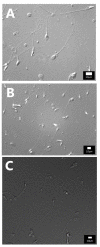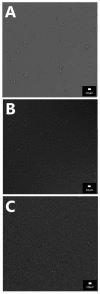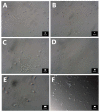IMSI-Guidelines for Sperm Quality Assessment
- PMID: 35054359
- PMCID: PMC8774575
- DOI: 10.3390/diagnostics12010192
IMSI-Guidelines for Sperm Quality Assessment
Abstract
Intracytoplasmic sperm injection (ICSI) is a widely used and accepted treatment of choice for oocyte fertilization. However, the quality of sperm selection depends on the accurate visualization of the morphology, which can be achieved with a high image resolution. We aim to correct the conviction, shown in a myriad of publications, that an ultra-high magnification in the range of 6000×-10,000× can be achieved with an optical microscope. The goal of observing sperm under the microscope is not to simply get a larger image, but rather to obtain more detail-therefore, we indicate that the optical system's resolution is what should be primarily considered. We provide specific microscope system setup recommendations sufficient for most clinical cases that are based on our experience showing that the optical resolution of 0.5 μm allows appropriate visualization of sperm defects. Last but not least, we suggest that mixed research results regarding the clinical value of IMSI, comparing to ICSI, can stem from a lack of standardization of microscopy techniques used for both ICSI and IMSI.
Keywords: intracytoplasmic morphologically selected sperm injection (IMSI); intracytoplasmic sperm injection (ICSI); optical microscopy; sperm quality.
Conflict of interest statement
The authors declare no conflict of interest.
Figures





References
-
- Ferraretti A.P., Nygren K., Andersen A.N., de Mouzon J., Kupka M., Calhaz-Jorge C., Wyns C., Gianaroli L., Goossens V., European IVF-Monitoring Consortium (EIM), for the European Society of Human Reproduction and Embryology (ESHRE) Trends over 15 years in ART in Europe: An analysis of 6 million cycles. Hum. Reprod. Open. 2017;2017:hox012. doi: 10.1093/hropen/hox012. - DOI - PMC - PubMed
Publication types
LinkOut - more resources
Full Text Sources

